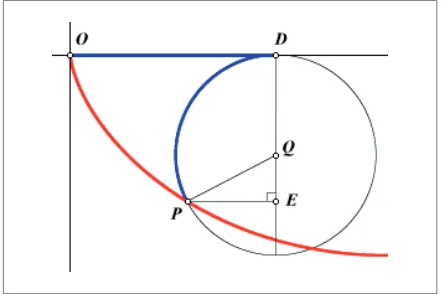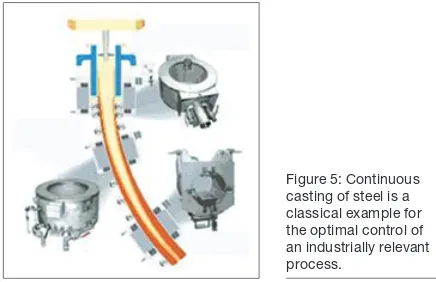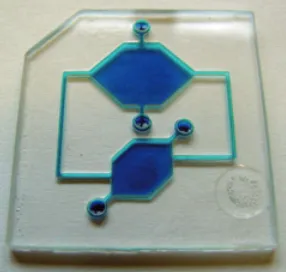www.esf.org
RESEARCH NETWORKING PROGRAMME
optimiSation with pde conStraintS
(optpde)
The front page displays a Callahan-Hoffman-Meeks minimal surface which is a singly periodic variant of the Costa surface. It is part of a collection of minimal surfaces within ‘Bloomington’s Virtual Minimal Surface Museum’ which can be visited at http://www.indiana.edu/eminimal/archive
Introduction
The OPTPDE programme is intended to provide a plat-form for scientists working in the areas of optimal control and optimisation and for those with a background in the theory and numerics of partial differential equations (PDE). This includes researchers who are interested in the solution of PDE-constrained optimisation prob-lems emerging from real-world applications in various disciplines such as economics, engineering, life and material sciences.
PDE-constrained optimisation covers a wide spec-trum of problems including distributed or boundary control of PDEs with constraints on the state and/or the control, the optimal design of structures and systems described by PDEs, and inverse problems such as the identification of parameters in PDEs. The appropriate solution requires a subtle understanding of advanced calculus of variations and PDE theory as well as the adequate application of state-of-the-art numerical tech-niques, namely adaptive finite element, multilevel and domain decomposition methods.
The running period of the ESF OPTPDE Research Networking Programme is five years from October 2008 to October 2013.
the european Science Foundation (eSF) is an inde-pendent, non-governmental organisation, the members of which are 80 national funding agencies, research-performing agencies, academies and learned societies from 30 countries.
the strength of eSF lies in the influential membership and in its ability to bring together the different domains of european science in order to meet the challenges of the future.
Since its establishment in 1974, eSF, which has its headquarters in Strasbourg with offices in Brussels and ostend, has assembled a host of organisations that span all disciplines of science, to create a common platform for cross-border cooperation in europe. eSF is dedicated to promote collaboration in scien-tific research, funding of research and science policy across europe. through its activities and instruments eSF has made major contributions to science in a glo-bal context. the eSF covers the following scientific domains:
• Humanities
• Life, Earth and Environmental Sciences • Medical Sciences
• Physical and Engineering Sciences • Social Sciences
• Marine Sciences • Nuclear Physics • Polar Sciences
OPTPDE | 3
Scientific Background
The theory of optimisation can be traced back to antiq-uity. The Greek mathematician Zenodorus, who lived in Athens around 200 BC, provided a proof of what is nowadays called the isoperimetric problem of geometry, i.e., the problem of determining the closed curve with a prescribed perimeter which encloses the largest area. The proof uses geometric arguments and is thus very different from how it would be proved today by using the powerful tool of calculus of variations. Indeed, it took centuries until Gottfried Wilhelm Leibnitz developed the foundations of infinitesimal calculus during the second half of the 17th century and motivated Johann Bernoulli
to challenge the mathematical community of his time with another celebrated optimisation problem, the bra-chistochrone, curve; i.e., the curve down which a ball slips from one point to another in the least time under the influence of gravity. Famous contemporaries such as Sir Issac Newton and Johann’s brother Jacob were among those who successfully solved the problem.
Half a century later, Leonhard Euler and Joseph-Louis Lagrange developed the elements of calculus of variations and thus provided a way to solve optimisa-tion problems in a general framework by means of the associated optimality conditions. It was Johann Carl Friedrich Gauss who suggested the gradient method as a powerful tool for the computation of a solution. Further necessary and also sufficient optimality conditions were developed, among others, by Adrien-Marie Legendre, Karl Theodor Wilhelm Weierstrass, David Hilbert, and Constantin Carath\´eodory. In the 20th century, new
dis-ciplines emerged such as linear programming pioneered by George Dantzig and game theory developed by Oskar Morgenstern, John von Neumann and John Nash which was mainly applied to economics and finance, but is nowadays a powerful tool as well in multi-objective optimisation. Moreover, new principles were discov-ered, among them Pontrjagin’s maximum principle and
Figure 1: The cycloid is the solution of the brachistochrone problem posed by Johann Bernoulli in 1696.
Bellman’s principle of dynamic programming. An es-sential breakthrough was achieved with rapid progress in the development of computing facilities required to provide efficient and reliable numerical tools for op-timisation problems. This was the birth of numerical optimisation which also paved the way for the solution of large-scale optimisation problems arising, e.g., from engineering applications. Indeed, the optimal design of mechanical structures and the optimal aerodynamic design of aircraft led to such disciplines as shape and topology optimisation.
Moreover, the launch of the first satellites and the following manned and unmanned space missions would have been impossible without numerical simulation and optimisation.
Nowadays, optimal control and optimisation algo-rithms have become indispensable tools for the design of new innovative products in all areas that concern our daily life.
Figure 2: The optimal design of a cantilever is a classical example in topology optimisation. The goal is to determine the arrangement of the material in such a way that an optimal mechanical behaviour is achieved.
Figure 3: The European Space Agency’s launch vehicle Ariane has been designed to deliver satellites and other payloads into low Earth orbit.
State-of-the-Art
The mathematical treatment of PDE-constrained opti-misation problems dates back to the 1950s. However, the emphasis of the early work was more on the theo-retical side in terms of the existence and uniqueness of results as well as on an analytical characterisation of the optimality conditions rather than on numerical methods which are mandatory in solving real-world problems.
On the other hand, over the years there was an enor-mous progress in continuous optimisation on one hand and on the development, analysis and implementation of numerical solution techniques for PDEs on the other hand without too much interaction between the respective communities. In continuous optimisation, milestones to be named are the renaissance of interior-point methods due to the so-called’ interior-point revolution’ triggered by Karmarkar’s polynomial time algorithm for linear pro-gramming problems and the development of Sequential Quadratic Programming (SQP) techniques which became the methods of choice in nonlinear programming. In shape and topology optimisation, the necessary and sufficient optimality conditions were characterised by shape gradients and shape Hessians and their topologi-cal counterparts which are variational derivatives that can be represented by boundary integral operators. Numerical methods based on shape gradients are well developed, whereas techniques using second order information in terms of shape Hessians are currently the subject of intensive research.
In the numerics of PDEs, the 1970s marked the begin-ning of multigrid and domain decomposition methods which now represent the most efficient algorithmic tech-niques for the numerical solution of PDEs and systems thereof. Since the discretisation of PDEs typically leads to large-scale algebraic systems, not only are fast solv-ers an issue, but also the reduction of the number of unknowns while keeping the accuracy of the approxi-mate solution. This can be achieved by adaptive mesh refinement and coarsening which was mainly developed
for finite element discretisations of PDEs based on ef-ficient and reliable a posteriori estimators of the global discretisation error or some other problem-specific quantities of interest.
The goal-oriented dual weighted approach originally introduced for adaptive finite element approximations of PDEs was the first methodology that has been sys-tematically applied to optimal control problems for PDEs without and with constraints on the state and the con-trol. Moreover, recently, efficient iterative solvers for such kinds of problems have been suggested such as primal-dual active set strategies that can be interpreted as semi-smooth Newton methods and interior-point methods. An important aspect is to study these meth-ods and derive optimality conditions in function space before discretisation, following the paradigm ’optimise first, then discretise’.
The traditional numerical solution of PDE-constrained optimal design is based on a sequential approach where for a given design the state equation is solved numerically followed by a sensitivity analysis that eventually leads to an improved design. This process is then repeated until convergence. A significant reduction in computational time can be achieved by so-called ’all-at-once’ methods featuring the simultaneous solution of the state equation and realisation of the optimisation strategy.
Many real-world applications give rise to multi-scale, multiphysics problems where the behaviour of the structure or system to be optimised depends on various physical phenomena that occur on a multitude of spatial and/or time scales. Homogenisation is an appro-priate tool to cope with such kind of problems. However, even the homogenised problem can still be too large such that a further reduction of the problem size must be provided; for instance, in terms of a suitable surro-gate model reflecting the basic physics of the original problem. The main streams are based on concurrent reduced-order modelling and hierarchical modelling. In the concurrent approach, a fine-scale model is used only for some local area of interest, whereas coarser
Figure 4: The optimal design of aircraft including aerofoil, flap and wing design as well as engine design represents a large-scale, multi-objective optimisation problem whose solution requires the application of advanced algorithmic tools.
OPTPDE | 5
State-of-the-Art
Research Topics
• Optimal distributed and boundary control of PDEs with control and state constraints
• Shape and topology optimisation
• Reduced order models (balanced truncation, proper orthogonal decomposition, reduced basis method) • Domain decomposition and multilevel methods • Semi-smooth Newton and interior-point methods • Adaptive methods based on reliable a posteriori error
estimates
• Real-world optimisation problems and real-time process control in aerodynamics, electromagnetics, structural mechanics, life, environmental and material sciences.
scale models take care of the rest of the computational domain. On the other hand, in hierarchical modelling, numerical simulations of the fine-scale model and/or data from experimental measurements are used to generate a hierarchy of coarser scale models. Possible techniques include proper orthogonal decomposition and the reduced basis method. Additionally, appropriate transfer operators have to be provided in order to facili-tate a switching between models within the hierarchy. A significant issue is to control the error with respect to the fine-scale model as the base model which contains all relevant information on the behaviour of the original system under consideration.
With the aforementioned milestones in continuous optimisation and in numerical PDE at hand, it seems natural to combine the approaches for the approximate solution of PDE-constrained optimisation problems and to provide platforms for an extensive exchange of ideas and joint research activities of scientists from both com-munities. Among other initiatives mostly on a national level, this project has been launched to achieve these goals on a European scale.
Figure 6: Several optimisation issues play a significant role in the development of the new generation of high-speed trains. Besides optimal aerodynamics, the design of the distributed electric drive system involves the solution of various PDE-constrained optimisation problems.
ESF Research Networking Programmes are principally funded by the Foundation’s Member Organisations on an à la carte basis. OPTPDE is supported by:
• Fonds zur Förderung der wissenschaftlichen Forschung in Österreich (FWF)
Austrian Science Research Fund, Austria
• Fonds National de la Recherche Scientifique (FNRS)
National Fund for Scientific Research, Belgium
• Akademie veˇd Cˇeské republiky (ASCˇR)
Academy of Sciences of the Czech Republic, Czech Republic
• Grantová agentura Cˇeské republiky (GACˇR)
Czech Science Foundation, Czech Republic
• Suomen Akatemia/Finlands Akademi
Academy of Finland, Finland
• Deutsche Forschungsgemeinschaft (DFG)
German Research Foundation, Germany
• Istituto Nazionale di Alta Matematica (INdAM)
National Institue for Advanced Mathematics, Italy
• Scuola Internazionale dei Studi Avanzati (SISSA)/Università di Roma “Tor Vegata” (Dip. di Matematica)/Dip. di Matematica “F. Brioschi” di Politecnico di Milano/Università di Padova/Università di Roma “La Sapienza” (Dip. di Matematica)
Italy
• Fonds National de la Recherche (FNR)
National Research Fund, Luxembourg
• Polska Akademia Nauk (PAN)
Polish Academy of Sciences, Poland
• Ministerio de Educación y Ciencia (MEC)
Ministry of Education and Science, Spain
• Vetenskapsrådet (VR)
Swedish Research Council, Sweden
• Schweizerischer Nationalfonds (SNF)
Swiss National Science Foundation, Switzerland
• Engineering and Physical Sciences Research Council (EPSRC)
United Kingdom
Funding
Activities
• Conferences
Three programme conferences will take place in 2008 (Warsaw), 2010 (Scandinavia) and 2012.
• Workshops
Three workshops will be scheduled for the second, third and fifth year.
• Summer schools
Summer schools are planned for 2009 (Finland), 2010 (Italy), 2011 (Spain).
• Exchange visits
Two types of grants for exchange visits are available: – Short visit grants of up to 15 days
– Exchange grants from 15 days to three months
• Website
OPTPDE | 7
Professor Ronald Hoppe (Chair)
Lehrstuhl für Angewandte Analysis mit Schwerpunkt Numerik
University of Augsburg
Universitätsstraße 14 • 86159 Augsburg • Germany Tel: +49 821 598 2194
Email: hoppe@math.uni-augsburg.de
Professor Martin Berggren
Department of Computing Science • Umea Universitet 901 87 Umea • Sweden
Tel: +46 90 786 6307
Email: Martin.Berggren@cs.umu.se
Professor Maurizio Falcone
Dipto di Matematica • Universita ‘La Sapienza’ Piazzale A. Moro 2 • 00185 Roma • Italy Tel: +39 06 499 13279
Fax: +39 06 447 01007 Email: falcone@mat.uniroma1.it
Professor Martin J. Gander
Université de Genève
2-4 rue du Lièvre • CP 64 • 1211 Genève • Switzerland Fax: +41 22 379 11 76
Email: Martin.Gander@unige.ch
Professor Jaroslav Haslinger
Faculty of Mathematics and Physics Charles University in Prague
Sokolovska 83 • 186 75 Prague 8 • Czech Republic Tel: +420 221 913 376
Email: hasling@karlin.mff.cuni.cz
Professor Karl Kunisch
Institut für Mathematik Karl Franzens Universität Graz Heinrichstr. 36 • 8010 Graz • Austria Tel: +43 316 380 5162
Fax: +43 316 380 9815
Email: karl.kunisch@uni-graz.at
Professor Pekka Neittaanmäki
Department of Mathematical Information Technology University of Jyväskylä • PO Box 35 (Agora)
40014 University of Jyväskylä • Finland Tel: +358 14 260 2733
Fax: +358 14 260 2771 Email: pn@mit.jyu.fi
Professor Nancy K. Nichols
Department of Mathematics • University of Reading PO Box 220 Whiteknights
Reading RG6 6AX • United Kingdom Tel: +44 118 378 8988
Fax: +44 118 931 3423
Email: n.k.nichols@reading.ac.uk
OPTPDE Steering Committee
Dr. Gast Rauchs
Centre de Recherche Public Henri Tudor BP 144 • 4002 Esch-sur-Alzette • Luxembourg Tel: +352 54 55 80 508
Fax: +352 54 55 80 333 Email: gaston.rauchs@tudor.lu
Professor Annick Sartenaer
Département de Mathématique FUNDP (Université de Namur)
8 Rempart de la Vierge • 5000 Namur • Belgium Tel: +32 81 72 49 34
Fax: +32 81 72 49 14
Email: annick.sartenaer@fundp.ac.be
Professor Antoni Zochowski
Systems Research Institute
Newelska 6 • 01-447 Warsaw • Poland Tel: +48 22 38 10 229
Fax: +48 22 837 27 72
Email: Antoni.Zochowski@ibspan.waw.pl
Dr. Enrique Zuazua
Departamento de Matemáticas • Facultad de Ciencias Universidad Autónoma Madrid • Ciudad Universitaria Cantoblanco • 28040 Madrid • Spain
Tel: +34 91 497 4368 Fax: +34 91 497 4889
Email: enrique.zuazua@uam.es
ESF Liaison
Dr. Thibaut Lery
Science
Ms. Catherine Werner
Administration
Physical and Engineering Sciences Unit European Science Foundation
1 quai Lezay-Marnésia • BP 90015 67080 Strasbourg cedex • France Tel: +33 (0)3 88 76 71 28
Fax: +33 (0)3 88 37 05 32 Email: cwerner@esf.org
For the latest information on this Research Networking Programme consult the OPTPDE website:
5
0
0 – J
un
e 2
0
09


